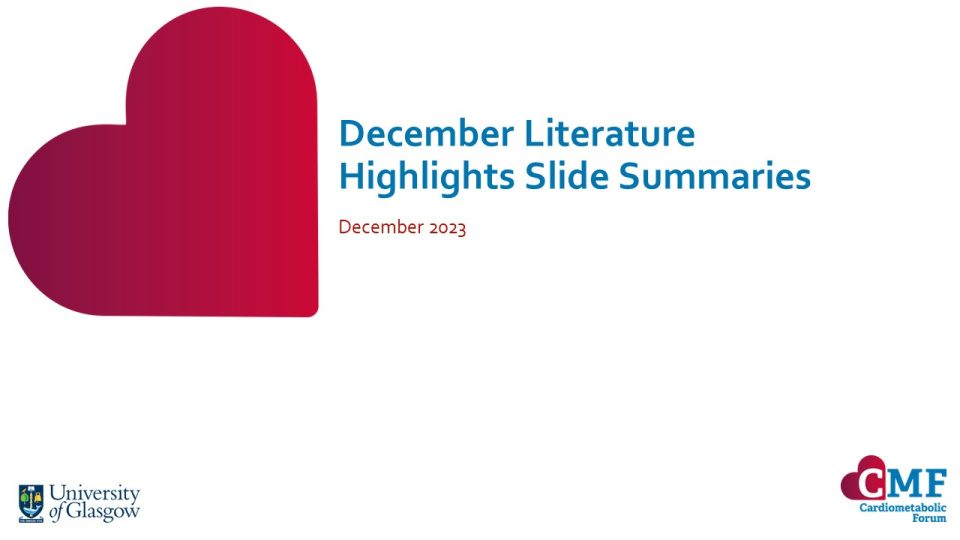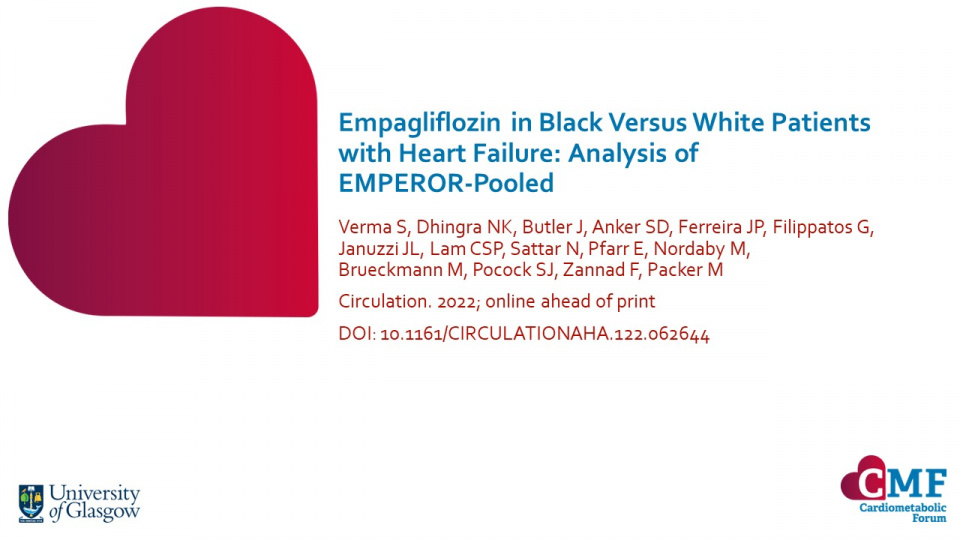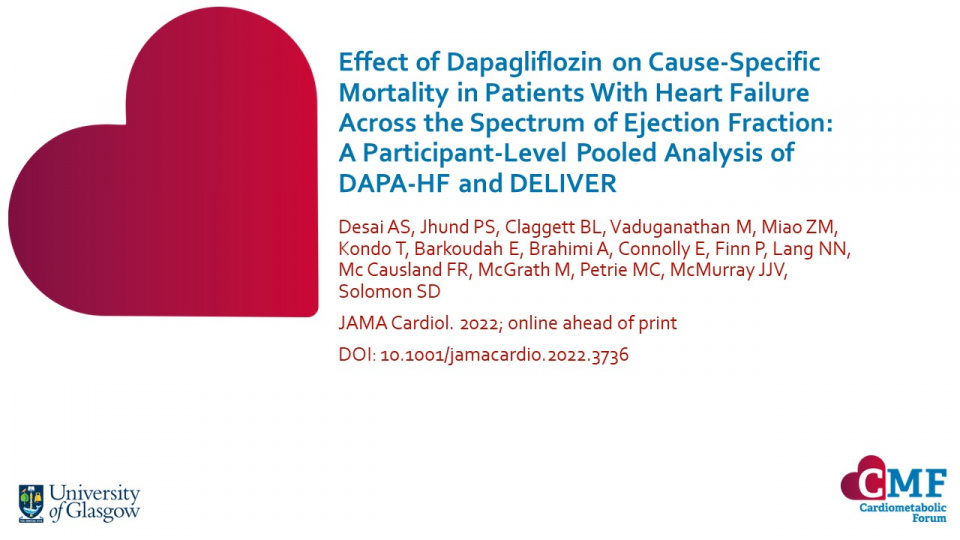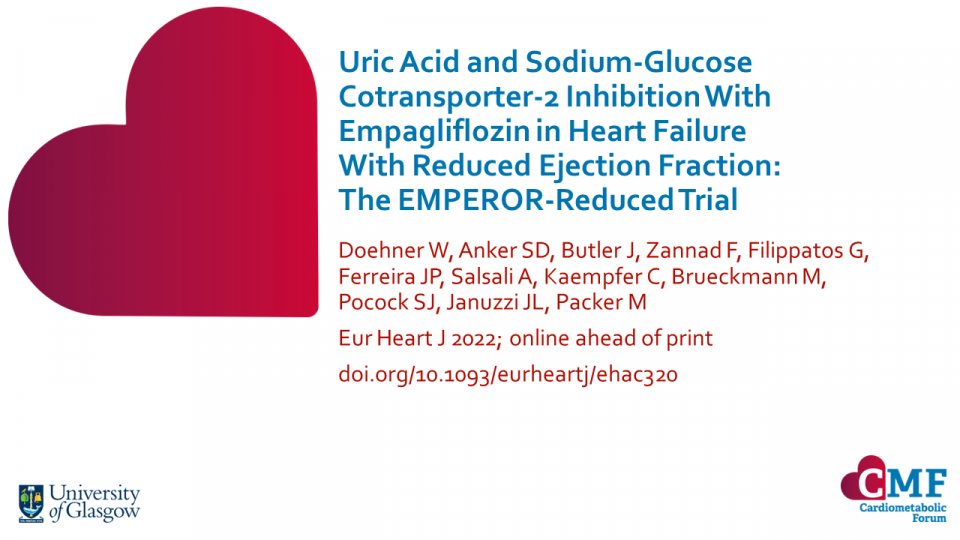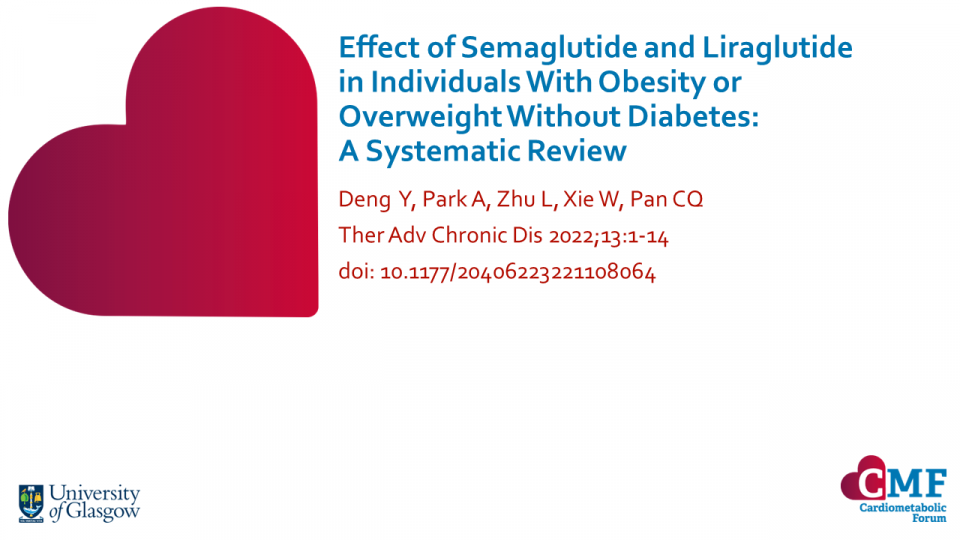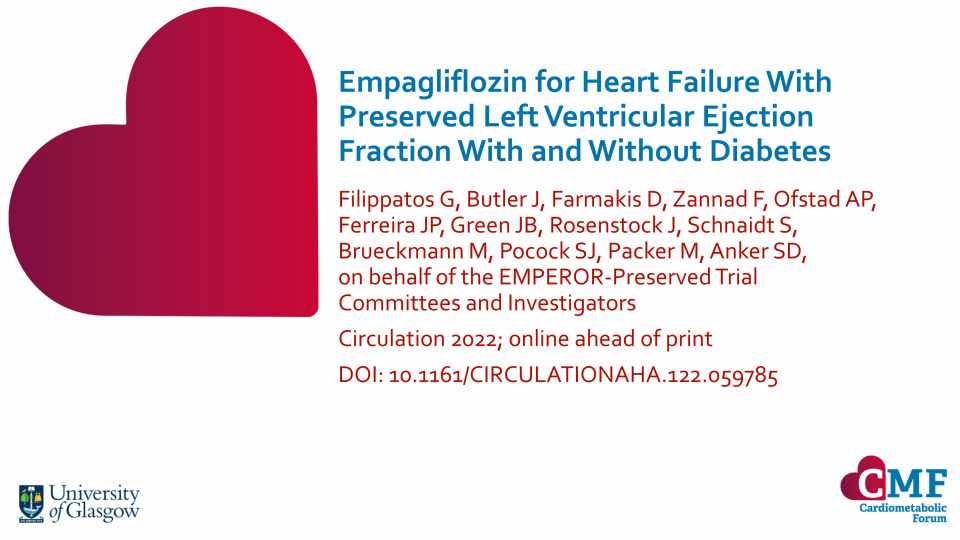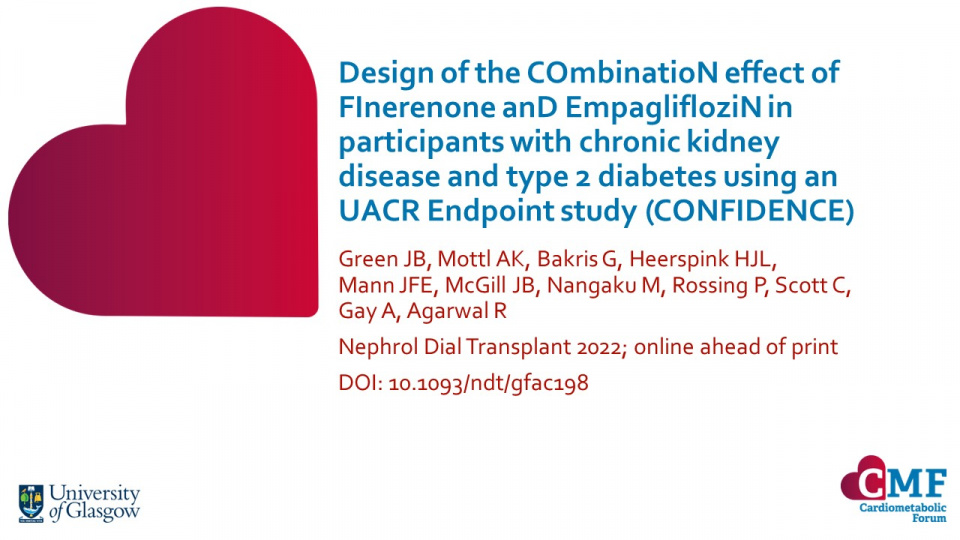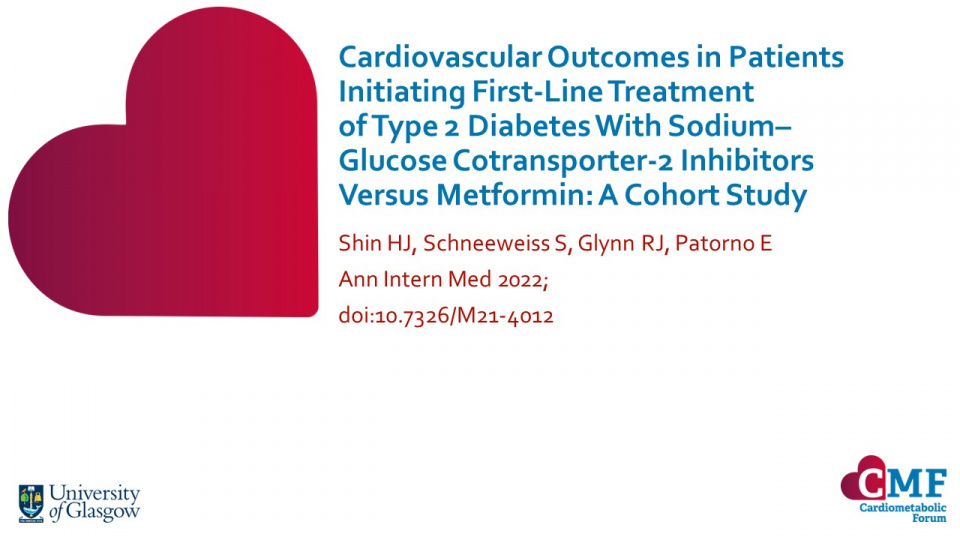Publications
Stay up to date with our literature reviews which are curated by experts to feature the most important publications released each month. Explore our publications for access to concise summary slides for your own use.
Empagliflozin in Black Versus White Patients with Heart Failure: Analysis of EMPEROR-Pooled
Circulation. 2022; online ahead of print DOI: 10.1161/CIRCULATIONAHA.122.062644
While analyses from DAPA-HF and EMPEROR-Reduced demonstrated a consistent benefit of SGLT2i in Black patients, data were limited to HFrEF and included a small number of Black patients. In the current analysis, the efficacy and safety of empagliflozin according to Black vs White race in the Americas was assessed across the spectrum of EF in EMPEROR-Pooled, a combined dataset from both EMPEROR trials.
Keywords:
Effect of Dapagliflozin on Cause-Specific Mortality in Patients With Heart Failure Across the Spectrum of Ejection Fraction: A Participant-Level Pooled Analysis of DAPA-HF and DELIVER
JAMA Cardiol. 2022; online ahead of print DOI: 10.1001/jamacardio.2022.3736
In a prospective, patient-level pooled meta-analysis of the DAPA-HF and DELIVER trials, dapagliflozin-associated reductions in CV mortality in patients with HF appeared to be principally due to lower rates of sudden death and HF death, regardless of EF.
Dapagliflozin in Patients Recently Hospitalized With Heart Failure and Mildly Reduced or Preserved Ejection Fraction
J Am Coll Cardiol. 2022; online ahead of print DOI: 10.1016/j.jacc.2022.07.021
This prespecified analysis of the DELIVER trial found that dapagliflozin had beneficial effects on cardiovascular (CV) outcomes in patients with heart failure (HF) with mildly reduced or preserved left ventricular ejection fraction (LVEF) who were enrolled during or following hospitalisation.
Dapagliflozin across the range of ejection fraction in patients with heart failure: a patient-level, pooled meta-analysis of DAPA-HF and DELIVER
Nat Med. 2022; online ahead of print DOI: 10.1038/s41591-022-01971-4
In a prospective, patient-level pooled meta-analysis of the DAPA-HF and DELIVER trials, dapagliflozin was found to improve clinical outcomes across the range of LVEF.
Semaglutide in Type 2 Diabetes With Chronic Kidney Disease at High Risk of Progression: Real-World Clinical Practice
Clin Kidney J 2022;15(8);1593-600 doi: 10.1093/ckj/sfac096
In this real-world study, patients with type 2 diabetes (T2D) and chronic kidney disease (CKD) treated with semaglutide significantly improved glycaemic control and decreased weight.
Uric Acid and Sodium-Glucose Cotransporter-2 Inhibition With Empagliflozin in Heart Failure With Reduced Ejection Fraction: The EMPEROR-Reduced Trial
Eur Heart J 2022; online ahead of print doi.org/10.1093/eurheartj/ehac320
Hyperuricaemia is common in heart failure (HF) and is an independent predictor of advanced disease severity and increased mortality. This analysis from EMPEROR-Reduced showed that empagliflozin induced a rapid and sustained reduction of both serum uric acid (SUA) and of clinical events related to hyperuricaemia.
Effect of Semaglutide and Liraglutide in Individuals With Obesity or Overweight Without Diabetes: A Systematic Review
Ther Adv Chronic Dis 2022;13:1-14 doi: 10.1177/20406223221108064
This systematic literature review found liraglutide and semaglutide led to clinically relevant (≥5%) weight loss in 48.2–88.7% of obese or overweight adults without diabetes.
Data on the effects of liraglutide and semaglutide in diabetes are well-known, but therapeutic outcomes in obese or overweight individuals without diabetes have not been summarised. This systematic review aimed to evaluate their effects in this population, and 18 studies representing 10,938 patients were included.
Empagliflozin for Heart Failure With Preserved Left Ventricular Ejection Fraction With and Without Diabetes
Circulation 2022; online ahead of print
In patients enrolled in EMPEROR-Preserved, empagliflozin significantly reduced the risk of heart failure (HF) outcomes irrespective of diabetes status.
Keywords:
Design of the COmbinatioN effect of FInerenone anD EmpaglifloziN in participants with chronic kidney disease and type 2 diabetes using an UACR Endpoint study (CONFIDENCE)
Nephrol Dial Transplant 2022 Jun 14;gfac198. Online ahead of print. doi: 10.1093/ndt/gfac198.
CONFIDENCE is a new trial currently recruiting. The aim is to demonstrate that 6 months’ dual therapy with finerenone and empagliflozin is superior for reducing albuminuria versus either agent alone.
Despite available interventions, people with T2D remain at risk of chronic kidney disease, which puts them at further risk of kidney failure, CV morbidity, and all-cause mortality. There is therefore a need to slow or attenuate the progression of chronic kidney disease (CKD) and reduce CV morbidity and mortality in this population.
Finerenone and sodium-glucose cotransporter-2 inhibitors (SGLT2i) can both reduce kidney and CV risks, acting via both shared and distinct pathophysiological pathways. Results from post hoc subgroup analyses and a preclinical model suggest dual therapy may provide additive renoprotective effects than using either class alone.
Cardiovascular Outcomes in Patients Initiating First-Line Treatment of Type 2 Diabetes With Sodium–Glucose Cotransporter-2 Inhibitors Versus Metformin: A Cohort Study
Ann Intern Med 2022; doi:10.7326/M21-4012
This cohort study found that those initiating a SGLT2i as their first-line treatment for T2D showed a similar risk for a composite outcome of MI, stroke, and mortality – and lower risk for a composite of hospitalisation for heart failure (HHF) and mortality. Compared with those receiving metformin as their first-line treatment, the SGLT2i safety profile was similar, except for an increased risk of genital infections.

